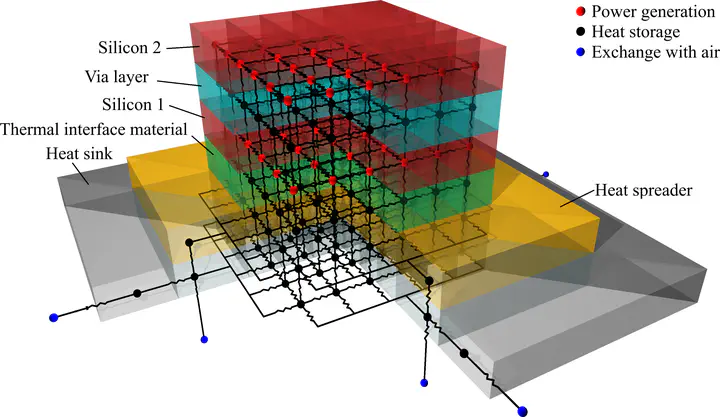Thermal Management and Wireless Sensor Network

Thermal Management for High-Performance CPUs
The development of increasingly powerful CPUs goes hand in hand with the search for new dissipation technologies able to prevent the onset of high-temperature related problems. In this context, the group works on both hardware and software solutions:
- (hardware) Heatsinks design: Through measurement experiments and simulations, the group’s work aims at finding new dissipation technologies able to keep the temperature of new generations of CPUs under control. These are indeed characterised by higher level of parallelism and performance, features that necessarily lead to a higher power dissipation
- (software) Dynamic Thermal Management: An efficient Thermal Management strategy needs also to process software mediums that can intervene whenever the heatsink activity is not sufficient. The group’s main target consists in implementing effective Dynamic Thermal Management software policies, able to balance the computing activities, thus keeping the CPU temperature within a certain threshold.
Wireless Sensor Networks (WSNs)
The development of wireless sensor networks has a great potential not only for customers (see IOT), but also and more importantly for the industry and the environment, especially for monitoring purposes. In this context, two features of the devices connected wirelessly are crucial. These are respectively:
- Time synchronization: In order to meet application requirements as well as guarantee an efficient interconnection among all the devices, these must be perfectly synchronised. This way, data get transmitted correctly and don’t get lost, and data fusion from the individual nodes is facilitated. In this context, the group is developing time synchronization systems that take into account both the local clock nonidealities, such as time-varying skew, and network-related issues, such as propagation delays.
- Hardware-Software codesign: the group is developing a WSN platform combining power efficiency, high performance and ease of programmability. The Miosix embedded operating system raises the programming abstraction allowing microcontroller applications to be written in C++11 in a preemptive multitasking environment. The WandStem WSN node provides a time-deterministic platform with hardware-assisted packet timestamping and power consumption introspection capabilities.